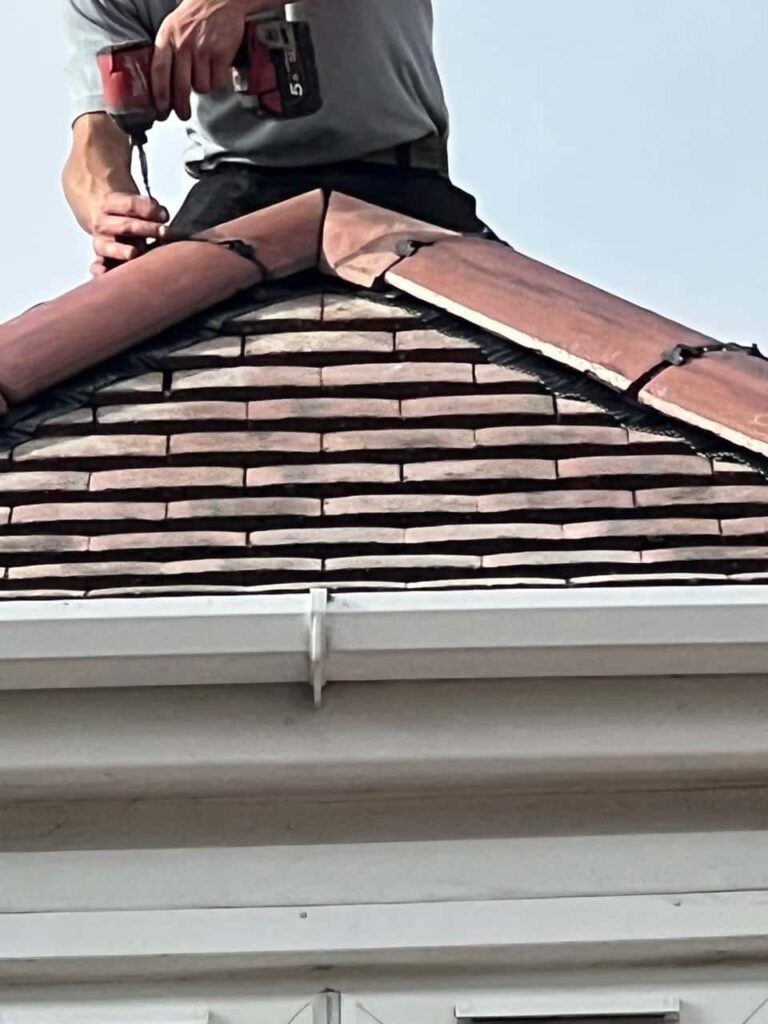Introduction: Ice dams can be a significant problem for flat roofs in winter. These ice ridges form at the roof’s edge and prevent melting snow from draining off. As water backs up behind the dam, it can leak into a building, causing damage to walls, ceilings, insulation, and other areas. This blog post will provide practical tips for preventing ice dams on flat roofs and helping property owners in colder climates protect their buildings during winter.
Understanding Ice Dams
Ice dams occur when heat from inside your building melts the snow on the roof. The melted water flows down the roof surface until it reaches the cold edge of the roof, where it refreezes, forming an ice dam. Over time, these dams can grow, capturing more water and increasing the likelihood of water intrusion and damage.
Preventative Measures for Flat Roofs
- Proper Insulation: One of the most effective ways to prevent ice dams is by improving attic insulation. Good insulation helps maintain a consistent roof temperature, thereby preventing uneven melting and freezing, contributing to ice dam formation.
- Adequate Ventilation: Ensure your roof and attic are well-ventilated. Ventilation helps remove the heat that accumulates in the attic, which can unevenly melt the snow on the roof. Good airflow from eaves to vents can keep the roof temperature uniform.
- Install Heating Cables: Before the onset of winter, consider installing heating cables along the edges of the roof. These cables heat up and prevent the formation of ice dams by creating channels for the melted snow to drain away safely.
- Roof and Gutter Maintenance: Regularly clean your roof and gutters. Removing leaves, twigs, and other debris before the snow falls ensures that melting snow can freely flow into gutters and downspouts, reducing the risk of ice dam formation.
- Use Membrane Underlayment: A waterproof membrane installed under the roof can help prevent water from seeping into your building if an ice dam forms. This rubberised material is especially effective on flat roofs, where water might pool more easily than on sloped surfaces.
- Snow Removal: Removing snow from the roof can be a direct and effective way to prevent ice dams after a heavy snowfall. Use a roof rake or hire professionals to safely remove the snow before it can melt and refreeze at the roof’s edge.
- Evaluate the Roof Design: In some cases, modifying the roof design can help eliminate recurring ice dam issues. For example, increasing the roof’s pitch or redesigning drainage paths may be necessary in areas prone to heavy snowfall.
Professional Assessments and Solutions
- Energy Audit: Consider having an energy audit performed to identify heat loss areas in your building. This can pinpoint specific spots where insulation and ventilation improvements are needed.
- Consult with Roofing Experts: If ice dams are a recurring problem, consult a roofing specialist. Professionals like Brownsover Roofing Repairs can offer customised solutions based on the specific challenges of your building.
Conclusion: Preventing ice dams is crucial for maintaining flat roofs’ structural integrity and longevity in cold climates. Building owners can significantly reduce the risk of ice dam formation by enhancing insulation, improving ventilation, and taking proactive measures such as installing heating cables or removing snow. Always consider the specific conditions of your roof and seek professional advice when necessary. With the right strategies, you can protect your property from winter weather and extend the life of your roof.
Call us on: 01788 221797
Click here to find out more about Brownsover Roofing Repairs
Click here to complete our contact form and see how we can help with your roofing needs.

